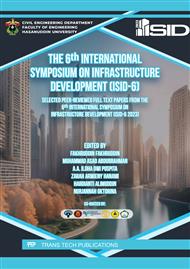p.157
p.165
p.177
p.185
p.195
p.207
p.217
p.227
p.239
Community Preference-Based Tsunami Disaster Mitigation Strategy in Barru Coastal City Area
Abstract:
Inside INarisk map, the National Disaster Management Agency (BNPB) shows that the coastal area of Barru has a moderate level of vulnerability to tsunami waves. Strategic steps which need to be taken are efforts to avoid or reduce casualties and property as well as damage to city infrastructure. The aim of the study is to determine a tsunami disaster management strategy based on the aspirations and expectations of the community. Primary data is needed in the form of the community level of understanding of the tsunami as well as data on the availability of supporting infrastructure and facilities for tsunami disaster mitigation. The secondary data needed is in the form of planning documents related to disaster management. In order to find out the community's knowledge and expectations of the tsunami, an IPA (importance performance analysis) analysis was used which linked to urban conditions related to the variables of the tsunami disaster. This study found that level of public understanding of the tsunami disaster and its countermeasures was still limited, therefore educational efforts are needed from each element. In general, the condition of the study areas did not yet have adequate tsunami mitigation facilities and infrastructures. Some of the community's preferences regarding the tsunami include the need for the availability of tsunami early warning, hospitals, roads to evacuation sites, coastal embankment infrastructure, and disaster evacuation sites.
Info:
Periodical:
Pages:
239-250
Citation:
Online since:
July 2025
Keywords:
Price:
Сopyright:
© 2025 Trans Tech Publications Ltd. All Rights Reserved
Share:
Citation:


